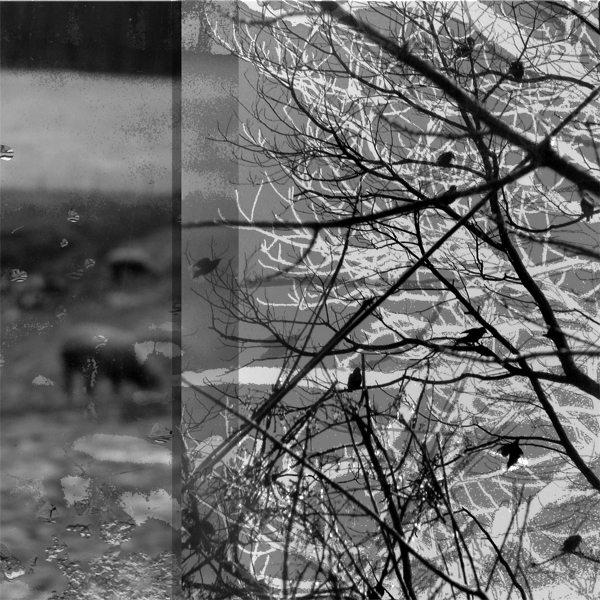

I drive this stretch of highway 231 often as I travel back and forth to Charleston, Illinois, where I teach at Eastern Illinois University. It’s a 10-mile stretch of a two-lane state highway, and the road winds up and down hills, through farmlands and woods. On a recent morning, as the first snow touched the land and then started to burn off when the sun came out, I drove the highway and took about one hundred photos of the passing landscape.
Back home after a 25-min drive, I stitched the photos into the composition above. The immediacy of creating visual studies in this way has an authenticity to me that matters; the composition is not premeditated, worked over, considered deeply. The images are taken quickly. It’s as if you find objects on your front porch in the morning; they arrive. And then you assemble them into something that works for you, visually.
Most artwork and design would not benefit from this randomness and chance. But for me, the absence of a lot of thought creates compelling work — at least some of the time, or often. It is, perhaps, just a technique to shut down the discriminating mind; to say, “What I capture now, I will use to create something new, something that interests me. What is before me now, this matters, has value.”
And this technique also opens me up a bit. Shows me that the everyday landscape surrounding me is not really ordinary. There is much to be interested in, always, and everyday life has a certain ever-changing mystery if we attend to it. If we try to be true amateurs. Michael Kimmelman writes in The Accidental Masterpiece, (p. 5):
“I hope to approach the art of seeing . . . in the spirit of an amateur. I mean amateur in the original sense of the word, as a lover, someone who does something for the love of it, wholeheartedly. The best amateur has the skills of a professional but true professionals stay amateurs at heart, keeping a lid on the cynicism and irony that can pass for sophistication in some circles.”
Kimmelman also says, in the same book: “So artful things may often be ordinary and can go easily unnoticed. See a plain line drawn by a pencil, Sol Lewitt said. See that it can be straight, thin, broken, curved, soft, angled, or thick. Enjoy the differences. This simple test of sensory acuity is not hard to pass if your eyes and mind aren’t shut, and your concentration is full.”
If your eyes and mind aren’t shut, he tells us.
And so I drive and take about one hundred pictures in 25 mins and see what happens.
Quite simple. Working on keeping my eyes and mind open.




